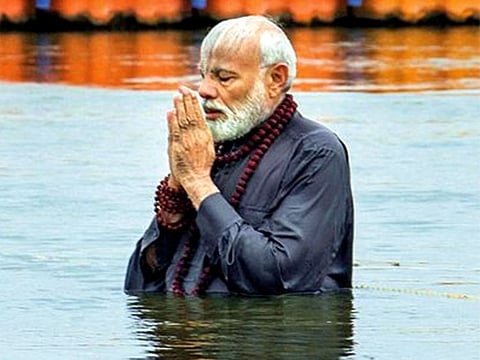Bypolls, the silly season of Indian politics, re-affirm Narendra Modi’s centrality for BJP
Recent election results tell you how the ruling party might do without the Prime Minister

In every news cycle there’s a silly season, when the media focuses on trivial issues. Within the world of electoral politics, bypolls are the silly season. And not just because some people insist on misspelling them as bye-polls.
Mid-term warning
Results for three Lok Sabha by-polls and 29 assembly byelections in India came out Tuesday. Opposition parties did far better than we are used to see them doing. One couldn’t help the sense of deja vu: the BJP lost quite a few bypolls around 2018, including a spectacular defeat in the stronghold of Gorakhpur, Yogi Adityanath’s home ground.
Bypoll defeats are used by the BJP as a wake up call, whereas opposition parties become over-confident and start working less hard.
Such cynicism about opposition parties is not the only reason why we shouldn’t take Tuesday’s bypoll results too seriously. Bypolls tend to be localised phenomenon.
A leader pases away and his wife wins the bypoll out of the sympathy factor. Somewhere, voters wanted to send a message to their favourite party to not take them for granted. And so on. Voters know that the bypoll won’t change the government, so they vote very differently from how they would do in a state-wide assembly or nation-wide general election.
Missing: The Modi factor
For this reason, the personality of Narendra Modi is not a big factor in by-polls. Supporters of the Bhartiya Janata Party know the bypoll result doesn’t really damage the status of PM Modi in anyway. So they tend to also vote more on local concerns than national ones.
We have, in any case, seen how the BJP doesn’t do as well in state elections as it has been doing in national elections. The difference becomes even greater in bypolls.
Vote for the powers-that-be
More importantly, the ruling party always has an edge in bypolls. It is, therefore, no big deal that the BJP has done well in bypolls in Assam or that the Mamata Banerjee-led Trinamool Congress has done well in by-polls in West Bengal.
The ruling party goes door to door, arguing before voters that they will be wasting their vote by choosing an opposition leader. It is wiser, they argue, to choose a legislator from the ruling party so that she can help you for the remaining term of the government.
With this argument, ruling parties have a decisive edge in bypolls. State governments are also easily able to splurge tax payers money on the seat going to bypolls.
BJP marches ahead in Telangana
Conversely, for the same reason, a ruling party losing a by-poll can often be a signal of severe anti-incumbency.
Perhaps the most interesting by-poll result is from Telangana. Eatala Rajender, a longstanding leader of the ruling Telangana Rashtra Samiti party, recently resigned as state minister and joined the BJP.
He thus lost his legislative seat and a by-poll had to be held. He won the seat by a decisive margin. By itself, the BJP won less than 1,700 votes on the seat in 2018.
Yes, this is Eatala’s victory more than the BJP’s, but it is also a show of strength for the BJP that it is able to poach a TRS minister and make him win the seat. This is part of the BJP’s aggressive strategy for Telangana, which is the next frontier.
As the BJP may shed existing seats, it is always looking back for new frontiers in the south and the east of the country. The next Telangana assembly election is due in 2023.
The third option in Rajasthan
The BJP’s poor performance in the bypolls in Himachal Pradesh is no doubt a sign of severe anti-incumbency against the BJP government in the state. Chief minister Jai Ram Thakur must be a worried man. But what is so new about the ruling party in Himachal becoming unpopular? The state alternates between the Congress and the BJP every five years.
The Congress victories in Rajasthan are a reminder of the incredible importance of Vasundhara Raje Scindia for the BJP. Without using her as the face of the party in Rajasthan, the BJP may be in trouble. It is equally important to note that in Rajasthan the contest looked three-sided. Independent MLAs and small parties are increasingly being assertive in the western state, reflecting a strong desire for a third force beyond Congress or BJP.
The amusing one is West Bengal, where the Trinamool won 75% vote share over 4 assembly seats. Given the perennial fear of political violence in Bengal, one wonders why it wasn’t 95%.
Sign up for the Daily Briefing
Get the latest news and updates straight to your inbox







